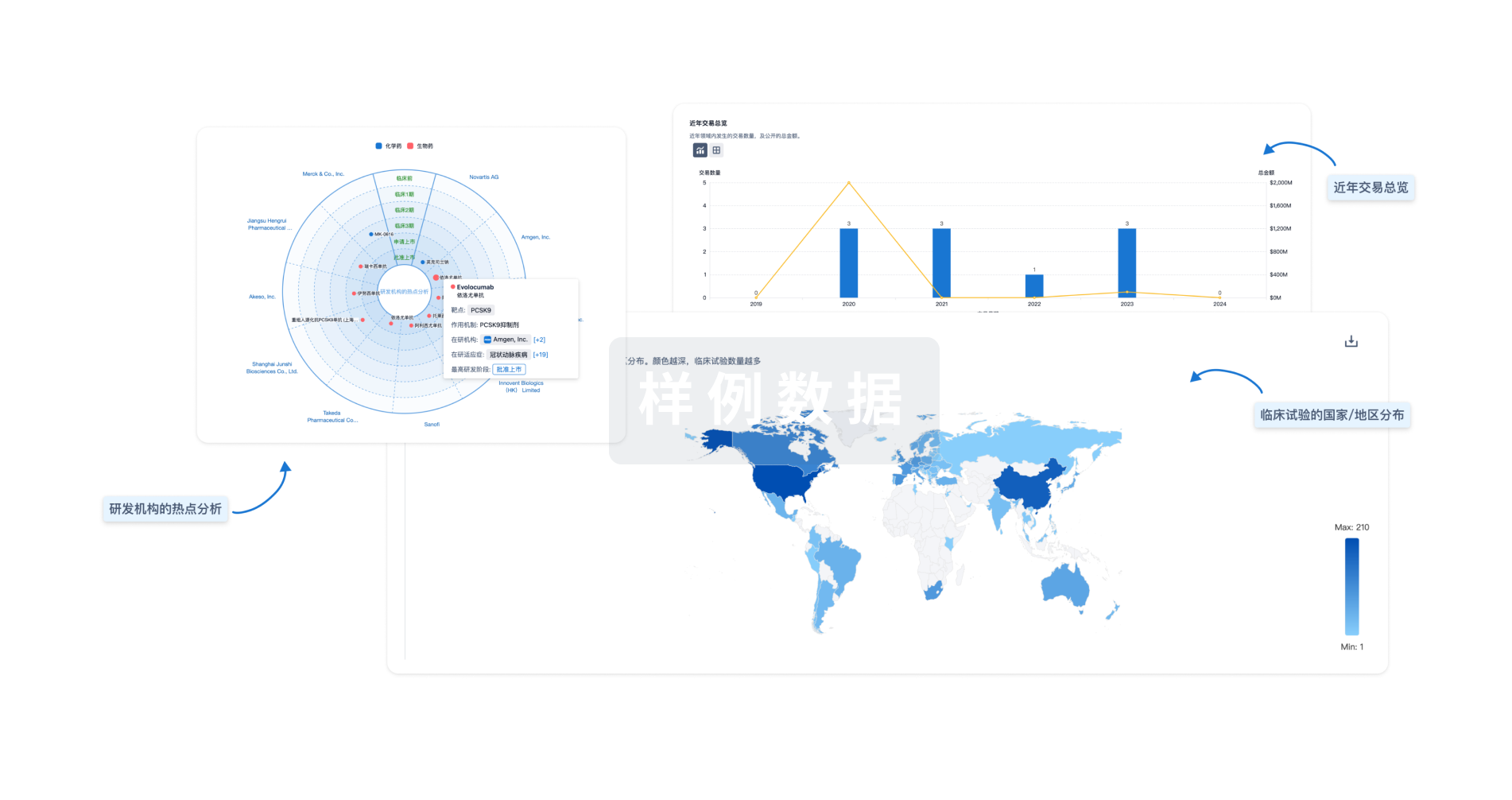预约演示
更新于:2025-05-07
TNFRSF10C
更新于:2025-05-07
基本信息
别名 Antagonist decoy receptor for TRAIL/Apo-2L、CD263、DcR1 + [14] |
简介 Receptor for the cytotoxic ligand TRAIL. Lacks a cytoplasmic death domain and hence is not capable of inducing apoptosis. May protect cells against TRAIL mediated apoptosis by competing with TRAIL-R1 and R2 for binding to the ligand. |
关联
100 项与 TNFRSF10C 相关的临床结果
登录后查看更多信息
100 项与 TNFRSF10C 相关的转化医学
登录后查看更多信息
0 项与 TNFRSF10C 相关的专利(医药)
登录后查看更多信息
632
项与 TNFRSF10C 相关的文献(医药)2025-04-01·RNA
Pervasive formation of double-stranded RNAs by overlapping sense/antisense transcripts in budding yeast mitosis and meiosis
Article
作者: Wery, Maxime ; Morillon, Antonin ; Boudet, Mateo ; Stuparević, Igor ; Bretaudeau, Anthony ; Becker, Emmanuelle ; Sallou, Olivier ; Szachnowski, Ugo ; Primig, Michael
2025-01-01·Applied Biochemistry and Biotechnology
Distinct Gene Expression and Immune Features Between Different Neutrophil Extracellular Trap-Related Osteosarcoma Subtypes
Article
作者: Song, Delei ; Che, Chunqing ; Yin, Xuqing
2024-11-13·mBio
InSeq analysis of defined
Legionella pneumophila
libraries identifies a transporter-encoding gene cluster important for intracellular replication in mammalian hosts
Article
作者: Moss, Caitlin E. ; Roy, Craig R.
2
项与 TNFRSF10C 相关的新闻(医药)2025-01-09
·药时空
前言
目前,免疫治疗已经成为除手术、化疗和放疗之外的抗肿瘤治疗的第四大支柱,其中基于T细胞的免疫治疗是一种有效的癌症治疗策略。根据αβ和γδT细胞受体(TCR)的表达,T细胞可分为两个主要亚群。αβT细胞识别非自身的肽抗原,如癌细胞表达的抗原。αβT细胞是适应性免疫的效应细胞,这些细胞以主要组织相容性复合体(MHC)限制的方式发挥细胞毒性。然而,由于MHC分子的丢失,肿瘤细胞通常抵抗αβT细胞的攻击。
相比之下,γδT细胞是固有免疫系统中的效应细胞,这些细胞以MHC不受限制的方式发挥作用,使它们成为癌症免疫治疗的理想介质。最近的研究表明,γδT细胞对各种类型的癌细胞具有强大的细胞毒性作用。然而,γδT细胞仅占循环淋巴细胞的一小部分,临床效益并不令人满意。目前,一些改进方法,如双特异性抗体和CAR-T可能突破γδT细胞的局限性,提高抗肿瘤效果。
γδT细胞的激活
人类外周血γδT细胞主要表达Vδ2链和Vγ9链,在识别磷酸化抗原(PAG)时被激活,如(E)-4-羟基-3-甲基-2-烯基焦磷酸盐(HMBPP)。BTN3A1是BTN3A(CD277)家族的亚型,在PAG激活γδT细胞中起着不可或缺的作用。BTN3A1在细胞表面广泛表达,由两个免疫球蛋白样胞外结构域和一个胞内B30.2结构域组成。
一般来说,在生理条件下,PAG的浓度不足以刺激γδT细胞。然而,由于代谢重编程,肿瘤细胞表现出PAG生成上调,这增加了甲羟戊酸途径的活性。此外,PAG浓度可在药理学上增加。用于治疗高钙血症或癌症骨转移的含氮双膦酸盐,如帕米膦酸盐(Pam)和唑来膦酸盐(ZOL),可抑制法尼基二磷酸(FPP)合成酶,这是甲羟戊酸途径中的限速酶。因此,IPP(FPP上游代谢物)浓度增加,从而激活γδT细胞。
γδT细胞与癌细胞的其它相互作用
γδT细胞不仅通过γδTCR识别PAG,还通过NKG2D受体识别应激相关抗原,对于自然杀伤细胞,这种识别方法是不受MHC限制的。MICA是一种刺激NKG2D受体的功能性配体,除MICA外,人类NKG2D配体中的MICB和ULBP1-4与NKG2D受体之间的相互作用对癌细胞识别和γδT细胞介导的细胞毒性非常重要。
在活化的γδT细胞中,Fas配体(FasL)和TNF相关凋亡诱导配体(TRAIL)的表达上调。FasL与CD95(也称为Fas或APO-1)相互作用, FasL结合CD95后激活caspase级联反应,从而启动癌细胞凋亡。
TRAIL与五种受体(TRAILRs)相互作用:DR4、DR5、DcR1、DcR2和骨保护素。死亡受体DR4和DR5含有一个称为死亡域的胞内结构域,当这些受体与TRAIL结合时,该区域使这些受体能够启动细胞毒性信号。因此,肿瘤细胞中CD95或死亡受体DR4或DR5的上调可能增强γδT细胞介导的细胞毒性。
肿瘤微环境与γδT细胞
一些研究证明了γδT细胞的可塑性,经PAGs激活后,γδT细胞通过分泌TNF-α和IFN-γ促进Th1免疫应答。然而,γδT细胞也可以极化成与Th2细胞、Th17细胞或调节性T细胞(Treg)性质相似的细胞。
肿瘤中不仅包括癌细胞,还包括细胞外基质(ECM)、基质细胞(如成纤维细胞和间充质基质细胞)、血管网络和免疫细胞,如T细胞和B细胞、NK细胞以及各种免疫抑制细胞,如肿瘤相关巨噬细胞(TAM)、髓源性抑制细胞(MDSCs)等,构成了肿瘤微环境(TME)。
TME中含有各种细胞因子、趋化因子、生长因子、炎症介质和基质重塑酶,以促进组成TME的细胞之间的串扰;这种环境可以促进γδT细胞极化为Th17或Treg样细胞,产生IL-17和TGF-β,有利于癌细胞增殖。产生IL-17的γδT细胞诱导血管生成并支持癌症进展, TGF-β可负性调节γδT细胞。
靶向TME的治疗,可以通过激活和改善γδT细胞的细胞毒性,增强抗肿瘤作用。在这些TME靶向治疗中,针对抑制性免疫检查点分子的治疗性抗体是克服TME免疫抑制效应的有效手段。过继性γδT细胞与免疫检查点抑制剂的结合是提高其细胞毒性的一种有希望的策略,因为PAG刺激的γδT细胞表达PD-1,阻断PD-1可能增强γδT细胞的抗肿瘤作用。
γδT细胞治疗的新形式
近年来,为了提高γδT细胞免疫治疗的抗肿瘤效果,人们提出了几种策略。双特异性抗体的使用显著提高了细胞毒性,临床前研究发现,EpCAM/CD3双特异性抗体增强了γδT细胞介导的肝母细胞瘤和儿童肝细胞癌的裂解。在临床前模型中,用HER2/Vγ9双特异性抗体体外扩增γδT细胞可显著降低胰腺癌和结肠癌的生长。此外,还报告了一种tribody(HER22xCD16),其包含两个HER2特异性单链片段,与一个靶向γδT细胞和NK细胞上表达的CD16单链片段融合,增强了γδT细胞和NK细胞介导的HER2表达肿瘤细胞的裂解。
嵌合抗原受体转导的γδT细胞(CAR-γδT)是克服目前治疗局限性的另一种新策略。临床前研究发现,在体外与阴性的CAR-γδT细胞相比,带有CD19特异性CAR-γδT细胞增强了对CD19+肿瘤细胞的杀伤,在小鼠模型中减少了CD19+白血病异种移植物。
CAR-T细胞免疫治疗存在靶向效应问题。Fisher等人设计了GD2特异性CAR-γδT细胞,以限制对正常细胞的毒性作用。GD2在神经母细胞瘤细胞表面和其他几种癌细胞上过度表达。在该研究中,γδT细胞识别肿瘤PAG抗原,然后抗GD2-CAR识别GD2并激活下游信号域以发挥抗肿瘤作用。因此,与γδTCR结合的表达GD2的神经母细胞瘤细胞被有效裂解,而与γδTCR结合的表达GD2的细胞没有受到影响。
目前,一些临床研究正在进行中。CAR-γδT细胞有望成为一种新型的γδT细胞免疫疗法。
小结
基于γδT细胞的免疫治疗非常有吸引力,这些细胞在体外和小鼠模型中对各种类型的癌症都显示出强烈的细胞毒性作用。然而,临床试验显示临床效益有限。新的方法,包括γδT细胞和免疫检查点抑制剂联合免疫治疗,双特异性抗体和CAR-γδT细胞都是有望克服目前治疗局限性的新策略。TME对γδT细胞免疫抑制作用的进一步研究,以及抗癌药物联合治疗、分子靶向药物、表观遗传药物、双特异性抗体以及CAR-γδT细胞的临床研究,将为未来γδT细胞免疫治疗的临床应用奠定基础。
参考文献:
1.Strategies to Improve the Antitumor Effectof γδT Cell Immunotherapy for Clinical Application. Int J Mol Sci. 2021Aug; 22(16): 8910.
识别微信二维码,可添加药时空小编
请注明:姓名+研究方向!
免疫疗法细胞疗法
2024-08-25
细胞毒性T淋巴细胞和自然杀伤细胞通过以下3种方式直接溶解恶性或被感染细胞。
1.颗粒介导的细胞毒性,涉及穿孔素和颗粒酶B。
穿孔素和颗粒酶从溶解颗粒中释放到突触间隙。穿孔素在靶细胞膜上形成孔隙。在高浓度的穿孔素下,通过孔的渗透通量导致细胞肿胀和坏死细胞死亡。穿孔素可通过直接扩散或内吞作用促进颗粒酶B的摄取。颗粒酶B通过Bad裂解tbasd直接切割caspase3诱导细胞凋亡或触发线粒体凋亡途径。tBid招募Bax/Bak,导致线粒体外膜通透(MOMP)和细胞凋亡。颗粒酶B也可能降解Mcl-1,释放Bim来激活MOMP。颗粒酶B还可以切割ICAD导致DNA损伤,a-微管蛋白导致细胞骨架降解,或gasderminE,在细胞膜上形成孔,诱导焦亡。
2.死亡受体介导的细胞毒性:DR4、DR5、Fas等。
通过FasL或trail连接死亡受体(Fas/DR4/DR5),触发由FADD和前半胱天蛋白酶8/10组成的死亡诱导信号复合物(DISC)的组装。Caspase8/10通过直接切割caspase3或通过Bid切割线粒体凋亡途径诱导细胞凋亡。
3.TNF介导的细胞毒性
过TNF连接TNFR1,触发复合物I(TRADD、RIPK1、TRAF2、cIAP1/2)的组装。LUBAC泛素化复合物I成分,通过NF-kB和MAPK通路导致促生存信号传导。在没有泛素化的情况下,RIPK1与FADD和前半胱spase8/10解离并形成复合物II。前caspase8/10的裂解通过与FasL/trail相同的途径触发细胞凋亡。在前caspase8不足的情况下,RIPK1也可以招募RIPK3,从而激活MLKL来触发坏死。
癌症和病毒产生耐受的机制
1. 抵抗穿孔素
在靶细胞膜形成孔是颗粒介导的细胞毒性的第一步,是渗透通量引起的坏死和颗粒酶B摄取引起的细胞凋亡所必需的。
对颗粒介导的细胞毒性的抵抗,显著降低淋巴细胞毒性。
对穿孔素耐受最初被确定为细胞毒性淋巴细胞(包括CTL和NK细胞)的一个特征,与各种非细胞毒性细胞系相比,这些细胞不太容易被纯化的穿孔素杀死。这种抗性保证淋巴细胞释放其细胞毒性物质时,自己首先可以生存。
恶性细胞也被观察到对穿孔素耐受,机制包括脂质顺序改变、磷脂酰丝氨酸暴露、细胞刚度调节和组织蛋白酶B介导的降解。
1.1 Lipid Order
膜组分改变可以改变Lipid Order,如在胆固醇掺入时增强Lipid Order。
从发现穿孔素开始,人们就知道穿孔素优先与合成脂质体或低级别液相脂质结合(例如DOPC),而非高阶凝胶相脂质(例如DPPC)。因为细胞毒性T细胞膜主要是排列紧密的高级别脂质膜,穿孔素不易与其结合,产生耐受,保护细胞毒性淋巴细胞免受穿孔素的自伤害。
对穿孔素耐受的癌症细胞,通过增加胆固醇,提升Lipid Order,对穿孔素产生耐受。
1.2 磷脂酰丝氨酸暴露
磷脂酰丝氨酸是一种带负电荷的磷脂,通常定位于细胞膜的胞内小叶,但在某些细胞状态下(如死亡,凋亡等)可以外化到外小叶。
重要的是,磷脂酰丝氨酸可以在免疫突触的淋巴细胞膜上外化,被认为是一种防止穿孔素孔形成的保护机制。原子力显微镜显示,穿孔素能够与含有平面脂质双分子层的磷脂酰丝氨酸结合,但他们形成蛋白质聚集物,而非跨膜孔。
磷脂酰丝氨酸外翻暴露是癌细胞的共同特征,在某些情况下还可以进一步增强,从而产生对于穿孔素的耐受,即使此时CAR-T等细胞毒性细胞功能正常。
疟原虫感染的红细胞表面磷脂酰丝氨酸的增加,对于穿孔素敏感性的降低。
1.3 细胞刚度
细胞的物理特性(包括细胞的张力或刚度)影响对穿孔素的敏感性。与健康细胞相比,癌细胞相对柔软和可变形,柔软的CD133+肿瘤再生细胞被发现对穿孔素耐受。
2. 抵抗颗粒酶
除了穿孔素外,颗粒酶也是颗粒介导的细胞毒性的重要组成部分。穿孔素孔形成后,颗粒酶进入靶细胞并切割各种靶点,有效地诱导细胞死亡。
颗粒酶活性可能通过两种方式降低
通过抑制穿孔素抑制导致的颗粒酶摄取减少,
通过直接抑制颗粒酶功能。
研究发现,对NK细胞毒性具有抵抗力的癌细胞,可以进行广泛的细胞骨架重构,降低颗粒酶摄取。因而细胞骨架抑制剂可以恢复颗粒酶水平和细胞毒性。
颗粒酶诱导的细胞死亡也可以通过直接抑制颗粒酶活性来减少。如:serpinB9直接作用于颗粒酶B,通过自噬降解颗粒酶B,以及破坏gasdermin介导的焦亡。
3. 抵抗死亡受体信号
死亡受体介导的细胞毒性,是细胞毒性淋巴细胞清除靶细胞的另一个关键机制。癌症细胞通过三种机制来逃避死亡受体介导的细胞毒性。
3.1. FLIPs:FADD-like IL-1b
converting enzyme (FLICE)-inhibitory proteins
FLICE Inhibitory Proteins (FLIPs)死亡受体抑制剂的最典型特征的家族之一是FLIPs。该蛋白家族包括病毒(v-FLIP)和细胞(c-FLIP)蛋白,它们具有很高的序列同源性。几种FLIP剪接变异在人类中表达,但主要形式包括短变异c-flips和长变异c-FLIPL。长变体包含一个额外的c端结构域,类似于caspase8和10的催化结构域,但没有caspase酶活性。c-FLIP的高肿瘤表达,特别是长变异的高表达,已被发现与一系列癌症的不良预后相关,包括急性髓系白血病、结肠直肠癌和非小细胞肺癌。
3.2. 诱饵受体的表达。
比如DcR1,和DcR2,缺少胞内功能段,与TRAIL结合后,削弱其诱导凋亡的功能。在乳腺癌、前列腺癌和白血病中,DcR1或DcR2的表达与肿瘤进展和不良预后相关。
3.3. 死亡受体的下调
参考文献
Tuomela K, Ambrose AR and
Davis DM (2022) Escaping Death:
How Cancer Cells and Infected Cells
Resist Cell-Mediated Cytotoxicity.
Front. Immunol. 13:867098.
doi: 10.3389/fimmu.2022.867098
Webster JD, Vucic D. The Balance of TNF Mediated Pathways Regulates
Inflammatory Cell Death Signaling in Healthy and Diseased Tissues. Front
Cell Dev Biol (2020) 8:365. doi: 10.3389/fcell.2020.00365
Waldman AD, Fritz JM, Lenardo MJ. A Guide to Cancer Immunotherapy:
From T Cell Basic Science to Clinical Practice. Nat Rev Immunol (2020)
20:651–68. doi: 10.1038/s41577-020-0306-5
免疫疗法细胞疗法
分析
对领域进行一次全面的分析。
登录
或

生物医药百科问答
全新生物医药AI Agent 覆盖科研全链路,让突破性发现快人一步
立即开始免费试用!
智慧芽新药情报库是智慧芽专为生命科学人士构建的基于AI的创新药情报平台,助您全方位提升您的研发与决策效率。
立即开始数据试用!
智慧芽新药库数据也通过智慧芽数据服务平台,以API或者数据包形式对外开放,助您更加充分利用智慧芽新药情报信息。
生物序列数据库
生物药研发创新
免费使用
化学结构数据库
小分子化药研发创新
免费使用